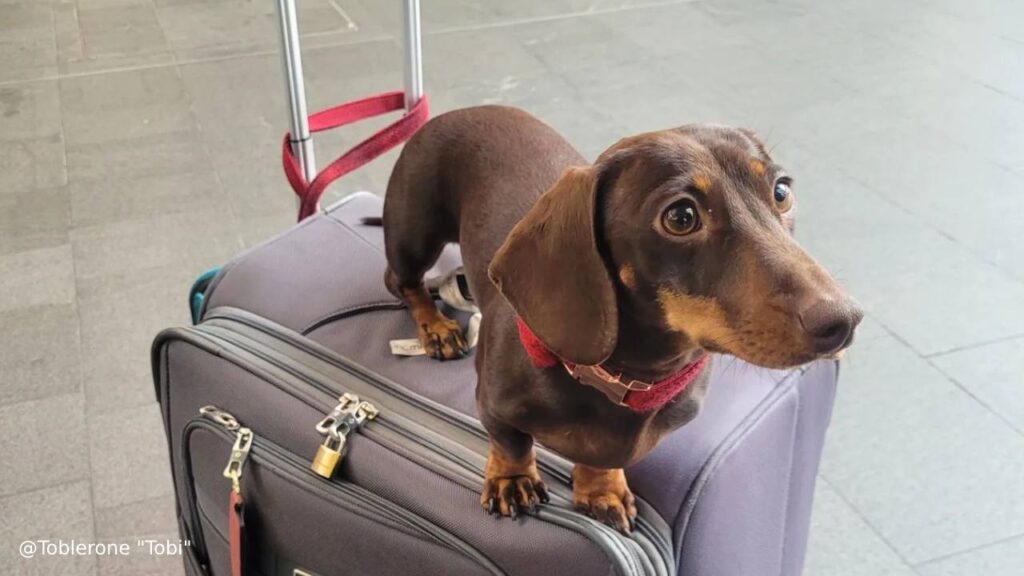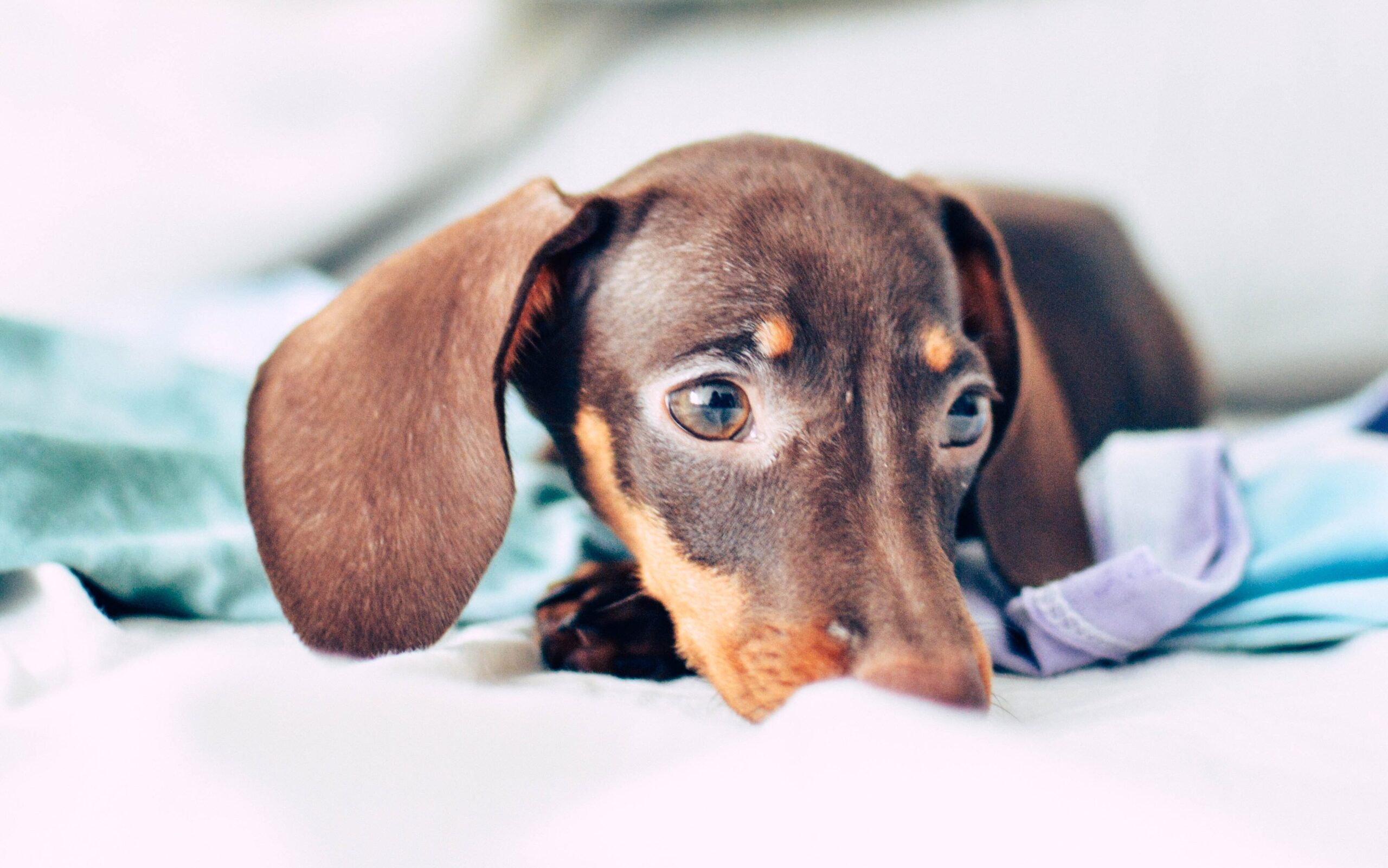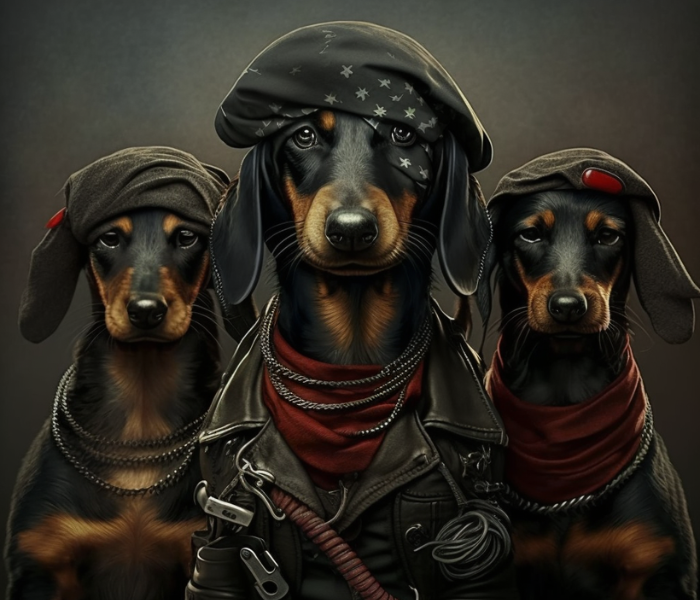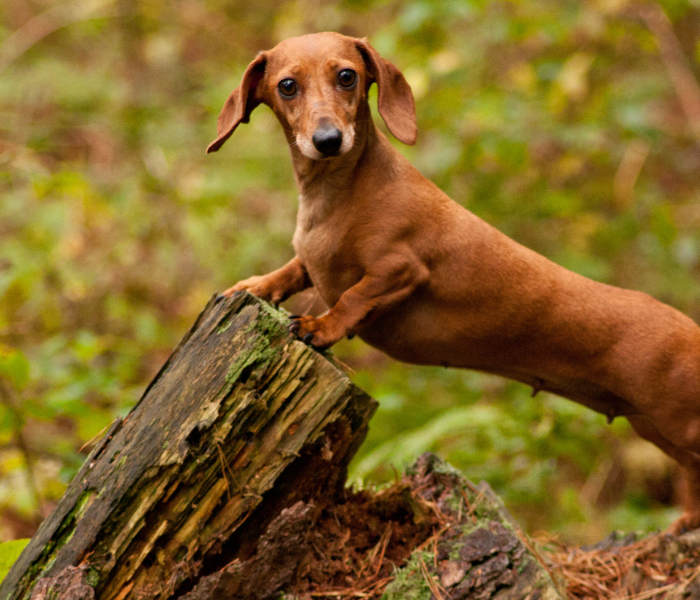
The miniature dachshund is a diminutive hound breed from Germany with a long, low body and either a short, wirehaired coat or a long coat. The larger variety of the dachshund dog breed is the standard dachshund, and these dogs are simply its smaller variant. Standard dachshunds weigh 16 to 32 pounds on average, compared to mini dachshunds’ typical weight of 11 pounds or less. In general, the breed is vivacious and playful, and it makes a keen little watchdog.
Characteristics of the Miniature Dachshund :
The majority of the time, mini dachshunds are outgoing and cheerful. Despite their small size, they have a tendency to be quite playful and need only a little exercise. It can be challenging to train them because they frequently have a stubborn side to them.
History of the Miniature Dachshund :
Around 600 years ago in Germany, the dachshund, or “badger dog,” had its ancestors. Dogs with long, low-to-the-ground bodies were specifically bred for their capacity to dig into badger dens while hunting.
Taking on the badgers required the dogs to be courageous, agile, and intelligent. Additionally, they required a loud bark so that their humans could follow them as they descended into the caves where their dens were located. These qualities are still present in modern dachshunds.
Breeders kept improving the dachshund, producing different sizes to hunt various kinds of game. As the 1800s came to an end, different coat styles and colors also emerged. The breed was initially approved by the American Kennel Club in 1885.
Mini Dachshund Care :
Although they don’t need a lot of exercise, mini dachshunds still need mental and physical stimulation every day. Depending on the type of coat they have, maintaining them is fairly simple. Furthermore, they need to be socialized and trained from a young age.
Exercise :
A miniature dachshund won’t be content to lounge around the house all day. Regardless of how little they are, these dogs still need to be exercised. Schedule daily exercise for at least an hour. A combination of vigorous playtime and moderately long morning and evening walks should be sufficient. To stimulate the mind, puzzle games and canine sports like tracking are beneficial.
When you are outside, keep your dog in a securely fenced area or on a leash at all times. If the dachshund spots a small animal or other perceived prey, it may flee quickly due to its high prey drive. Additionally, be mindful that these dogs frequently enjoy digging and may trespass if you’re not paying attention.
Aim to keep your dachshund from running up and down stairs or jumping on and off of furniture in order to avoid back injuries.
Grooming :
Plan on brushing your smooth-coated dachshund once a week minimum to get rid of any loose fur. To avoid mats and tangles, the longhaired variety should be brushed a few times per week. The wirehaired variety needs weekly brushing in addition to several coat removals per year. To keep them looking neat, you might also need to trim the animal’s beard and brows.
Plan on a bath roughly every month, depending on how dirty your dog gets. A canine detangler spray might be helpful for those dogs with long hair. Also, check your dog’s nails monthly to see whether they need a trim. Additionally, keep an eye out for infections and wax buildup in its ears at least once per week. Finally, aim to brush its teeth every day.

Training :
The Dachshund is an intelligent dog. However, they can also be independent and stubborn, which can make training them difficult. Additionally, they are prone to distraction if they spot something that they mistake for prey that they want to chase.
As early as possible, begin socialization and training. To positive reinforcement techniques like treats, dachshunds respond favorably. They may stop trying to learn if you give them harsh corrections.
Along with obedience training, start early socialization with other dogs and people. Not all strangers, both people and dogs, are well received by dachshunds. But being in a supportive environment can help them feel more at ease and confident.




5 thoughts on “Miniature Dachshund: Care and characteristics of the breed.”